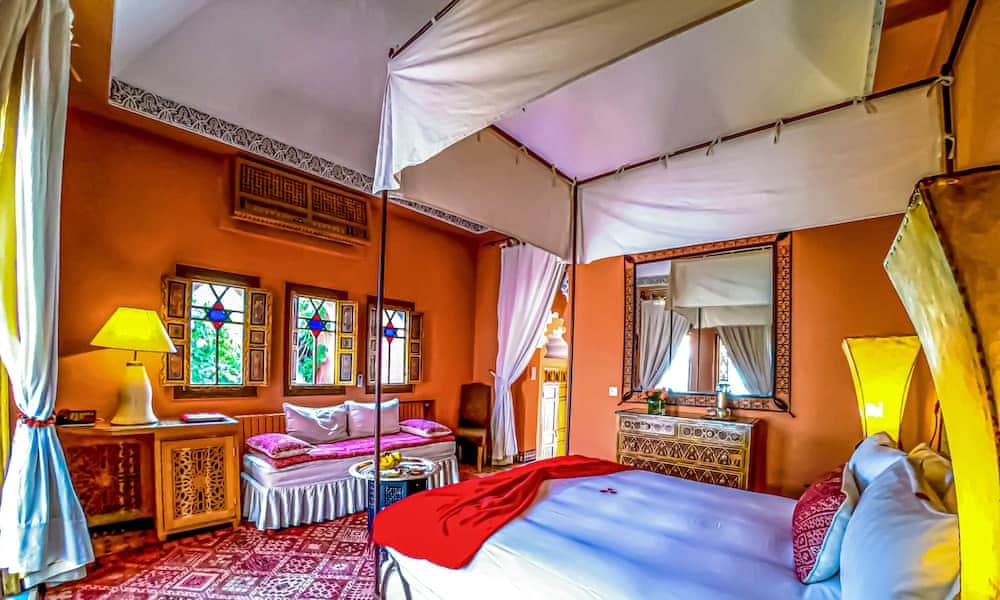Morocco’s riads: a retreat worthy of royalty
A riad is a traditional Moroccan mansion, born of Mediterranean culture and shaped by Islamic, Andalusian and Maghreb influences. Once symbols of luxury and opulence, many riads today serve as small and friendly hotels, offering tourists an authentic taste of Moroccan hospitality. They represent an interweaving of spirituality, history, architecture and Moroccan culture.
Riads are everywhere in Morocco: overlooking the Atlas Mountains; nestled in a blue corner of Chefchaouen or at the heart of any medina. Once built only for the comfort of rich and noble families, they are now the popular choice for a stay in Morocco.
Whether it is your first trip to Morocco or whether you are a regular visitor, a stay in a riad offers an immersive and unique experience.
The global influences of riads
The distinctive architecture of a riad brings together many cultural themes of the Islamic world. Roman, Persian, Arab and Andalusian influences live through their spectacular walls and structures. Riads are built around a sort of atrium, an interior Roman courtyard, which bears witness to the Mediterranean and Hellenistic influences on the Muslim world. They are historic capsules, also representing architectural and development across the Muslim world during the “Belle Époque”. The conceptualisation of riad gardens comes from the Persians and Mughals in India. “Char Bagh”, which means “four gardens” in the Persian language, recalls the gardens of paradise mentioned in the Quran and riads gardens were adapted according to these divine images.
What is unique about riads?
The riad is a traditional building with an interior courtyard surrounded by balconies. In order to offer the family privacy from the outside world and protection from the elements, a riad is oriented towards the interior. What gives it its unique character is, on the one hand, the attention to detail and symmetry present in Islamic and North African art, and on the other hand the unconformity of wild nature, offering a beautiful amalgam between natural and human details. The art of Islamic and historic interior decoration is distinguished through the decorative tiles, stucco, woodwork and wood carvings of the windows. The bright blue and green colours, which are often present, offer nature the opportunity to reclaim its rights, enticing many birds and butterflies into the riads. Their gardens are home to plants, lush greenery and flowers of Moroccan origin. This natural environment offers an artistic and spiritual experience.
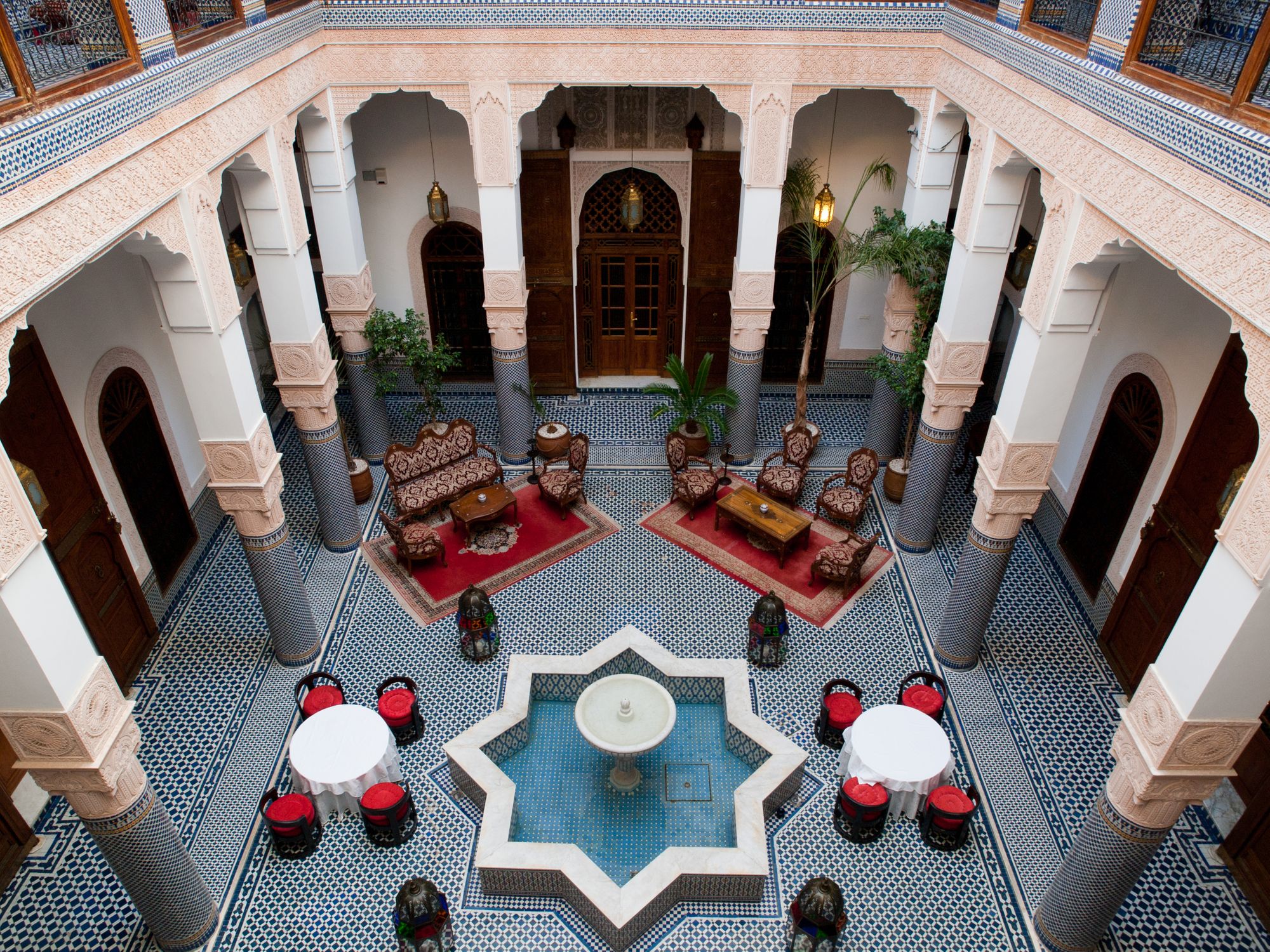
Aesthetics of the riads
The first riads were built by craftsmen of various religious and ethnic origins, which greatly influenced the aesthetics of the riads. Here are some examples of the material used for the construction and decoration of riads:
- Tadelakt - Impermeable plaster with a silky texture used on many surfaces: walls, ceilings, flower beds, baths, etc. It is of red, ochre or burnt orange colour. The word ‘tadelakt’ comes from the verb "Dalaka" which means to rub, massage or polish in the Amazigh (Berber) language with ancient origins from Yemen.
- Zellige - Islamic mosaic art found throughout the Maghreb region and the former Moorish territories of Maghrebi origin,with its first traces found in Tunisia. Geometric shapes are often found around fountains, walls and pillars.
- Arabic Calligraphy - Arabic calligraphy can be found on paintings and the walls of ancient riads. This artistic and religious expression is linked to a manifestation of complex spirituality. The way of writing Arabic letters in calligraphy is a religious vocation, as the Arab culture places intellectual and divine importance on writing.
- Stucco - Lime plaster, similar to tadelakt. This functional and artistic technique was developed by the Romans. Stucco, which is durable and malleable, is made with cement, sand, water and limestone.
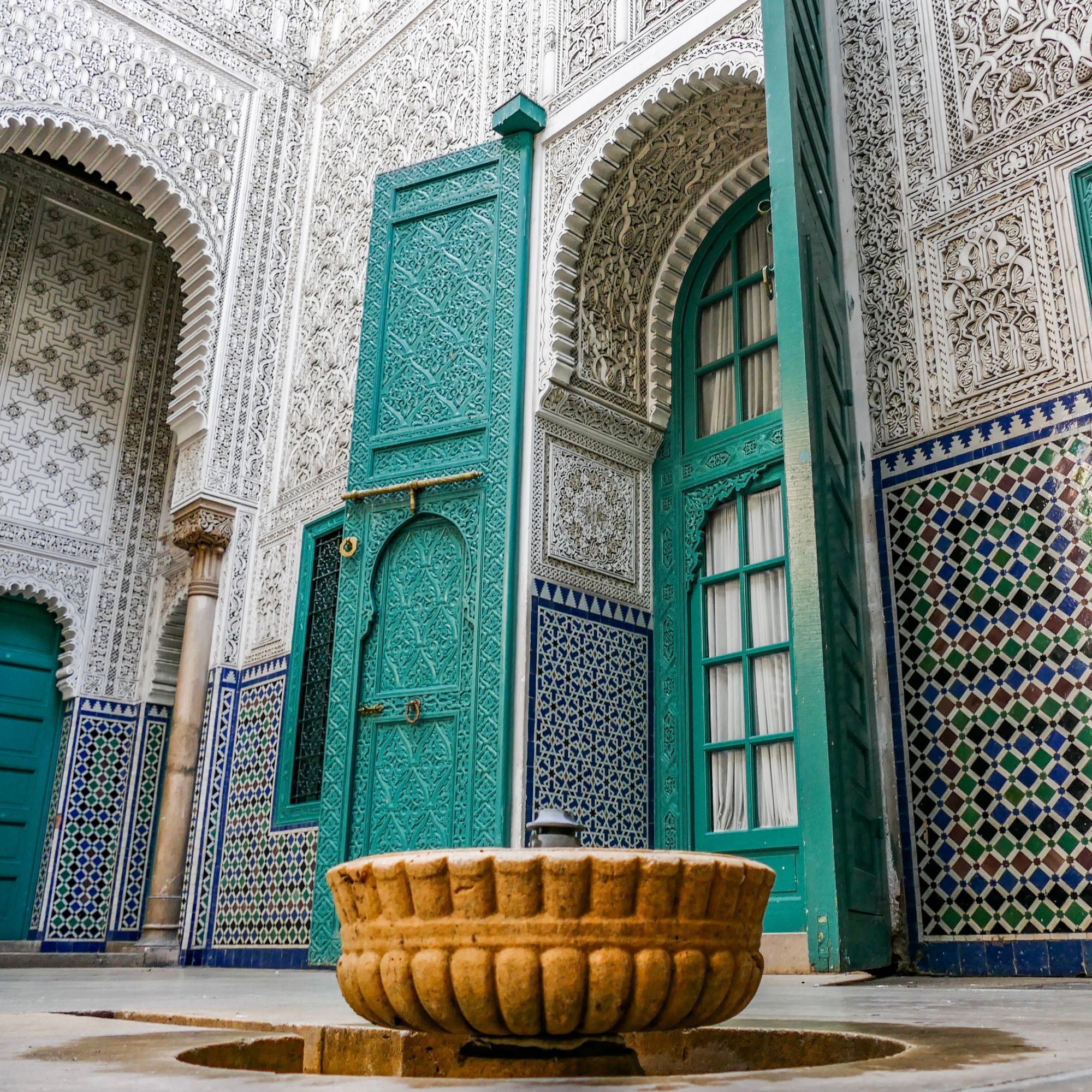
Where are riads mostly located?
Many riads are easily accessible and many have now been turned into small hotels serving the tourism sector. Their popularity and the fact that so many of them are being restored is down to their beauty and functionality. Riads were often inhabited by people whose wealth came from politics or business, which means that they are usually well located in the centre of the medinas, at the heart of Morocco’s historic cities.
The symbolisms of the riad
The word "riad" in Arabic has three meanings which may seem to be different, but which are made concrete in a very beautiful way through the architecture of the riad: health, nature and mathematics. The beautiful complexity of the word cultivates its many symbolic meanings:
- Health - The roots of the Arabic word 'riad' (ر و ض) are related to terms such as 'exercise', 'walk' and 'stroll', which is reflected in the riad's main special feature, which is the way in which it blends the exterior and the interior: inhabitants can go for a walk without leaving the house.
- Nature - In addition, the word "riad" implies a visual element of the image of a garden or a meadow, as the interior courtyard of the riad emphasises nature with fountains and sunlight.
- Mathematics - The linguistic connection of the word "riad" is associated with mathematics in terms of symmetry, the manipulation of space and the height of buildings.
Female-friendly aspect of the riads
The structure of the riad is similar to that of the women's sections of houses in the Ottoman Empire. The interior windows are delicately engraved, allowing women to look outside without being seen and thus maintain their privacy. The high walls surrounding the terraces allowed discretion for women to meet over mint tea or to go about their daily routines without being seen from the outside.
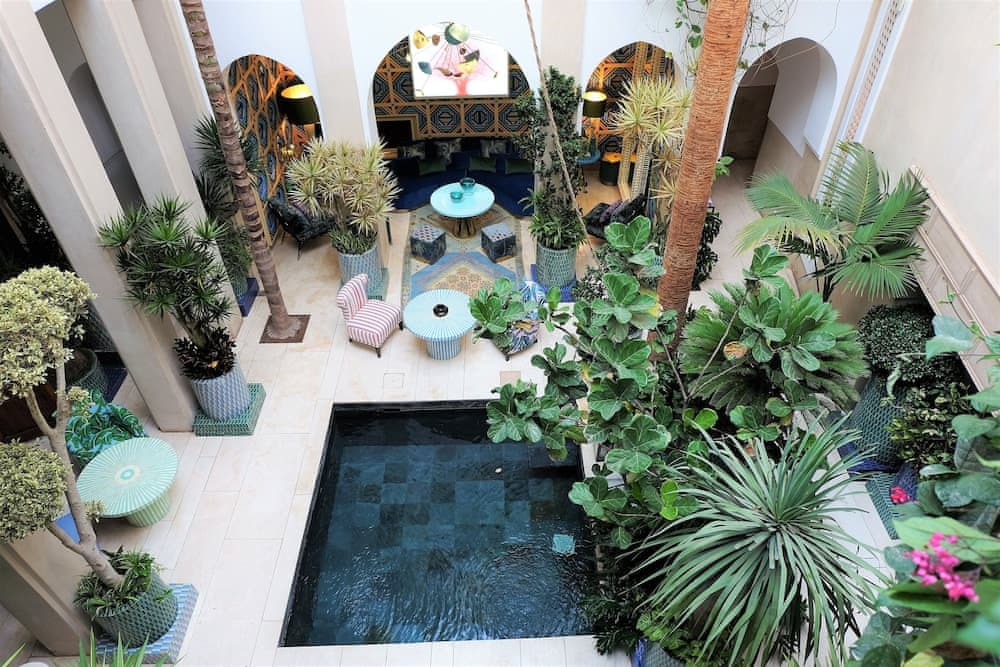
The modern significance of the riad
Today, riads symbolise the journey across borders and time. Tourists can now enjoy the experience of staying in the authentic atmosphere of a historic riad and put themselves in the shoes of the rich people who once lived there.
Halal-friendly aspect of riads
Halalbooking offers a wide choice of riads located throughout Morocco. The filters available on halalbooking.com make organising and planning a halal-friendly trip easy. Here are some examples of halal filters that you can use when searching for the right riad:
- Privacy for women - Riads were once grand houses, which have additional rooms which nowadays are used as hammams or massage rooms. In addition, there are many riads which have converted their fountains or pools into modern swimming pools. Some riads are available to hire in their entirety, which allow Muslim women to discover the sublime experience of swimming surrounded by the art and beauty of the Moroccan riad in complete privacy.
- No Alcohol - Halalbooking is proud to offer nearly 1,000 different riads across Morocco, over 160 of which do not serve alcohol, for your peace of mind.
- Mosques and Prayer - Throughout Morocco, you will find mosques on every corner: from simple, hidden places of prayer to breathtaking mosques. You can also request prayer rugs and qibla direction in your rooms.
Styles of riad
You will find a style of riad to suit every taste:
Traditional riads
Lovers of history and authenticity will be delighted to discover traditional riads, which preserve the original spirit, incorporating craftsmanship and the typical atmosphere of riads of the past. Here are a few examples:
- Riad Fleur d'Orient - This riad is a perfect example of traditional luxury with the incorporation of classic colours from the Amazigh tribes, the indigenous people of Morocco. Some decorations such as the Hand of Fatima represent superstitious beliefs and the furniture is reminiscent of traditional craftsmanship.
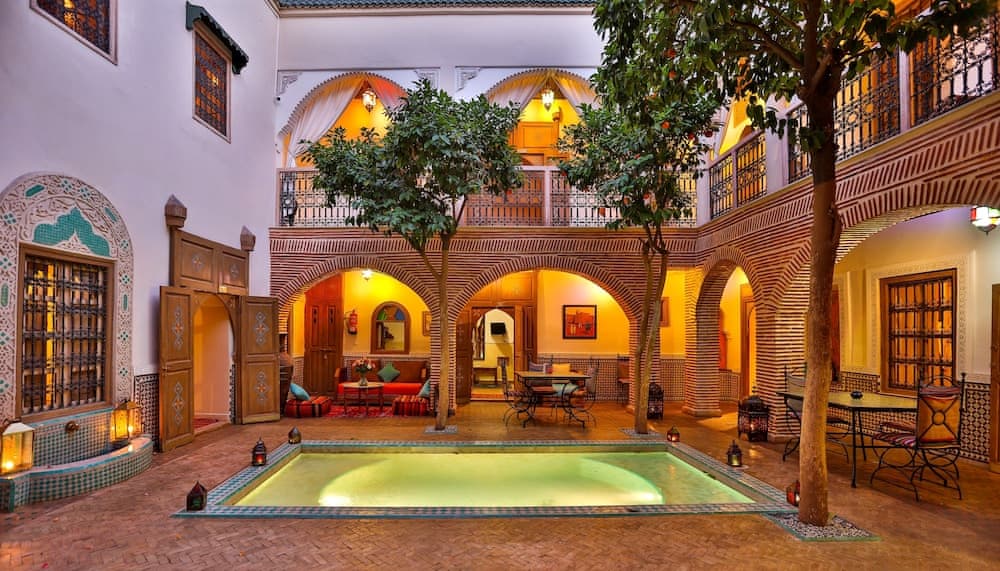
- Riad Maison Arabo Andalouse - As its name suggests, this riad remains faithful to the spirit of the Maghreb riads. It incorporates a vibrant red, a typical and natural colour of the earth that contrasts with the discreet colours of clay, stone and engraved wood. The tiled floors throughout the riad complete its authentic ambience.
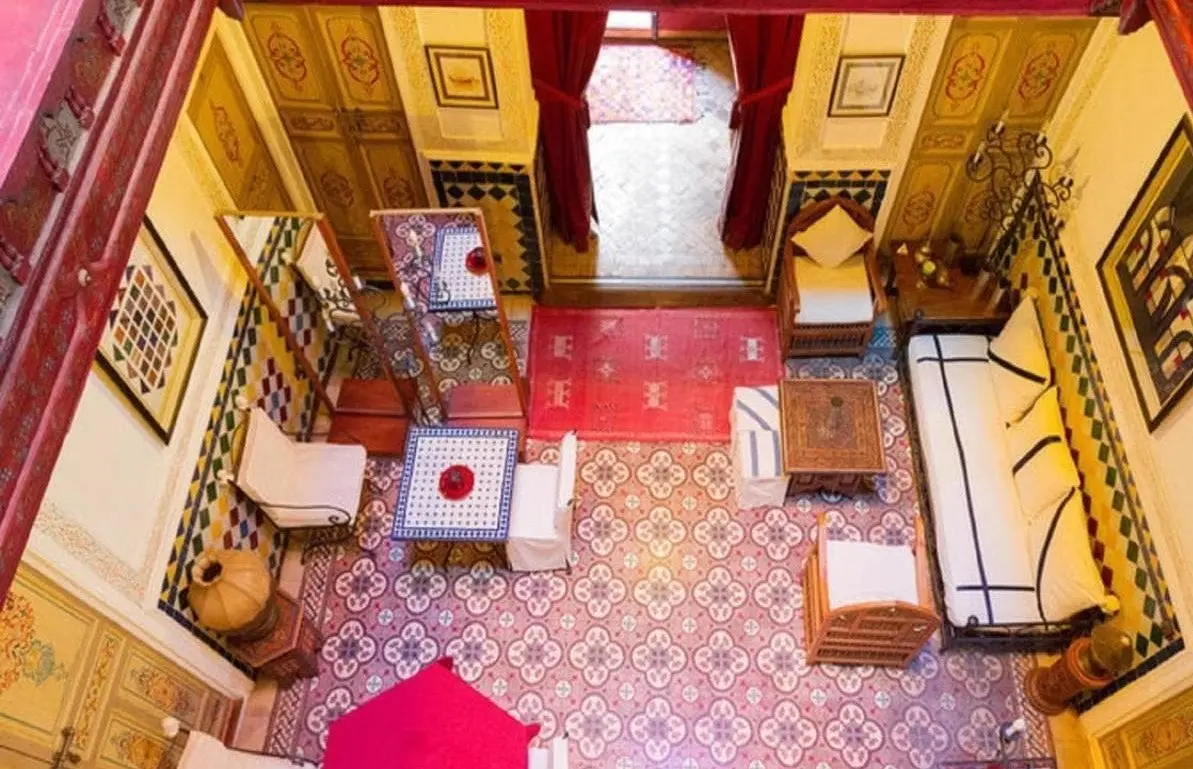
Modern riads
The importance of riads for the travel sector has inspired the innovative design of old riads. Using the foundations of traditional riads, modernity is injected with global inspiration, enticing themes and avant-garde decor. Modern riads are perfect for those seeking adventure
- Riad Khol - This riad unites European styles and furniture in its structure and authentic Moroccan rooms. Each room has a unique atmosphere with the colours of the walls which amplify the inspiration behind the names (Chambre Noir Poudre, Red Cyprus, Jasmine and Terre D'ombre).
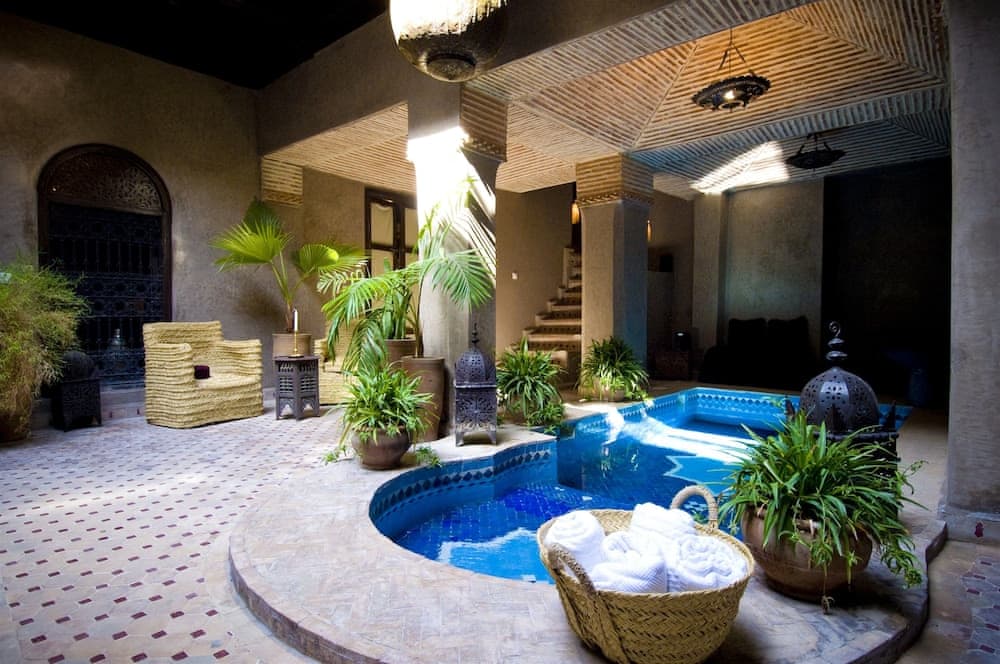
- Riad Karmela Princesse - This riad breaks all the rules, showing a different personality in each private or public room. Stay in an all-white and cream bedroom or a rainbow-coloured bedroom with endless designs.
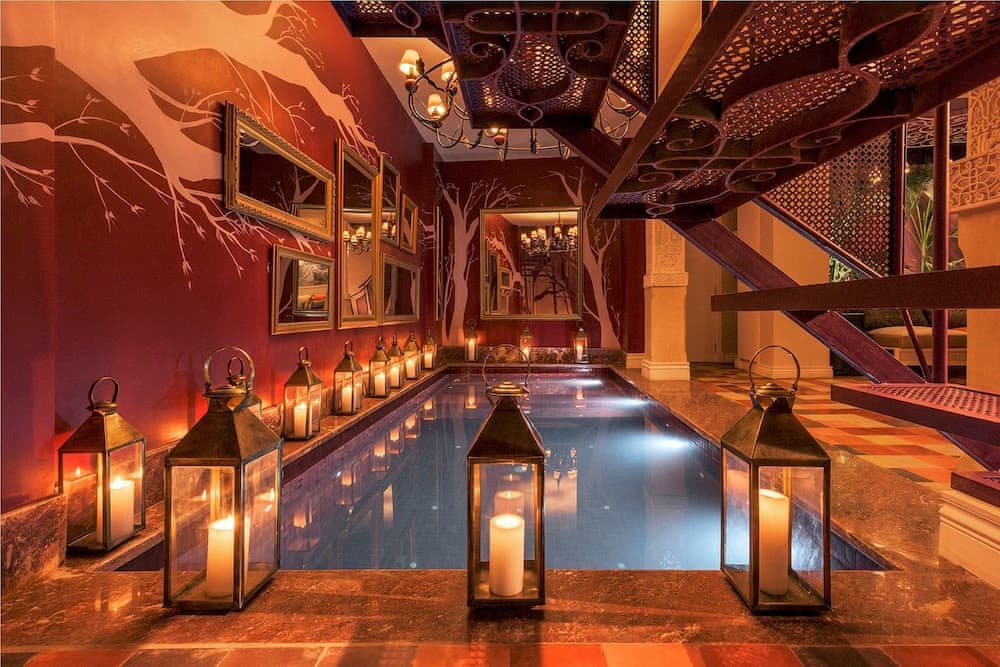
- Riad Ilayka - This riad, at first glance, appears to be traditional with its luxury decor and furnishings fit for a king, but the dark vibe indicates a Victorian and Gothic influence. The riad offers bathrooms with Islamic decor and absolutely divine rooms.
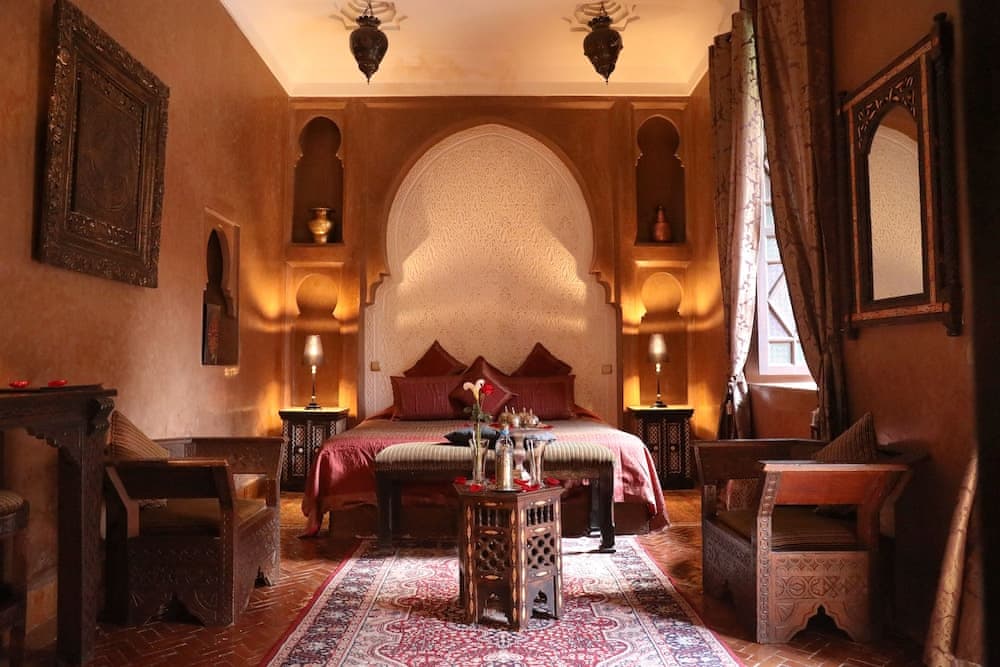
Riads that invite nature
Nature has always been part of the unique charm of traditional riads, although over the years there has been a shift so that most of them no longer showcase nature. However, there are some unique riads that do still highlight the diversity of Moroccan nature:
- Riad 11 Zitoune - In combination with bright colours, this riad incorporates natural and unspoiled elements. At every corner there is uncarved wood, Saharan plants and lush greenery.
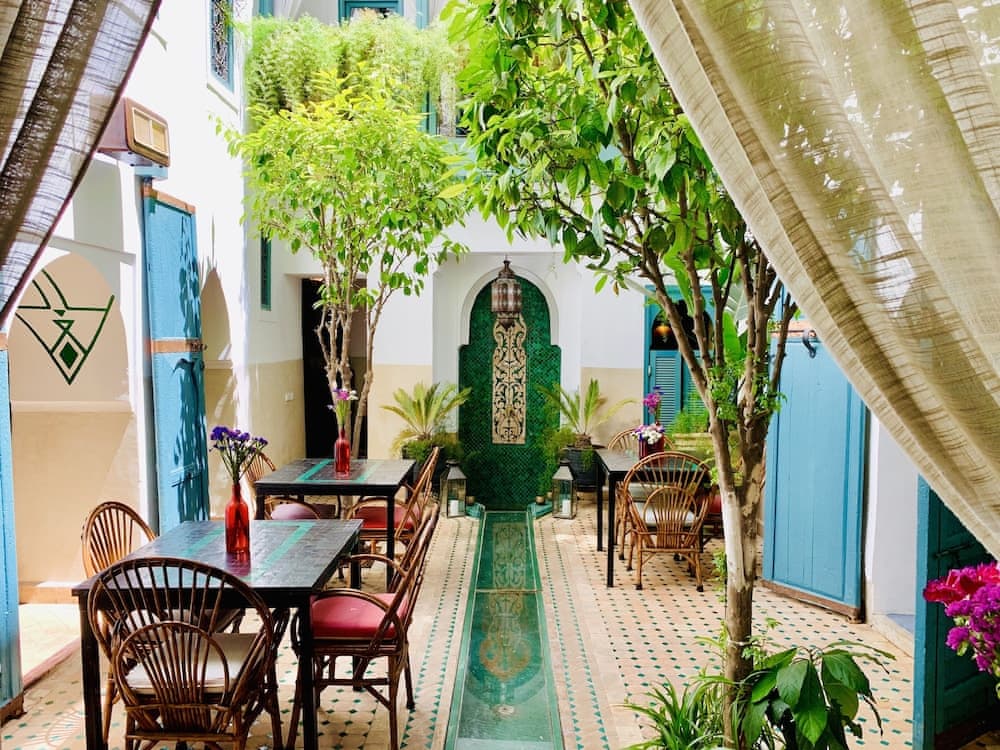
- Riad Kaiss by Anika - A riad that amalgamates traditionalism and modern art with an explosion of bright colours. The balconies in the suites invite green trees to climb and unite with the natural touches of Arab-African origin. The terrace and the courtyard, inspired by the Roman atrium, are superior models of nature in beautiful freedom.
